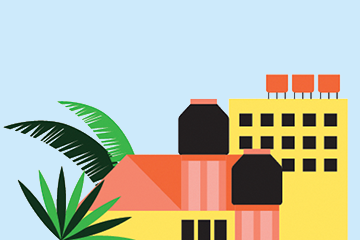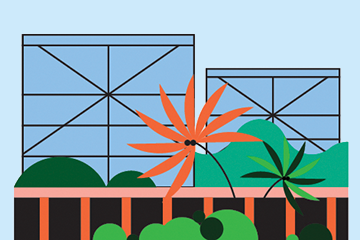Climate change is helping sink Mexico City
The comings and goings of water define Mexico City, a mile-high metropolis sprawled across three dry lake beds. The city floods in the wet season and thirsts during regular droughts.
CDMX, as the city of 21 million styles itself, pumps more water from the aquifer below it than it replenishes: the city sank some 12 meters in the last century and may sink another 30 meters before hitting rock bottom. The drier land also puts buildings at greater risk for earthquake damage.
Many Mexico City residents cannot rely on the faucets in their homes for water. In 2020, the city spent more than $4 million on water trucks, and residents spent around $187 million on bottled water.
Scientists predict that climate change will exacerbate these problems.
But residents are taking charge of water—and their climate futures—in a variety of ways that promise to buoy the city’s hydraulic balance and perhaps promote equitable access to safe drinking water.
Here we look at projections for Mexico City’s climate future and some of the approaches that residents are taking to mitigate the worst of the effects.
Total rainfall will decline
!function(){“use strict”;window.addEventListener(“message”,(function(e){if(void 0!==e.data[“datawrapper-height”]){var t=document.querySelectorAll(“iframe”);for(var a in e.data[“datawrapper-height”])for(var r=0;r<t.length;r++){if(t[r].contentWindow===e.source)t[r].style.height=e.data["datawrapper-height"][a]+"px"}}}))}();
But when it does rain, it will pour
!function(){“use strict”;window.addEventListener(“message”,(function(e){if(void 0!==e.data[“datawrapper-height”]){var t=document.querySelectorAll(“iframe”);for(var a in e.data[“datawrapper-height”])for(var r=0;r<t.length;r++){if(t[r].contentWindow===e.source)t[r].style.height=e.data["datawrapper-height"][a]+"px"}}}))}();
Some areas of Mexico City have higher climate-related risks than others
!function(){“use strict”;window.addEventListener(“message”,(function(e){if(void 0!==e.data[“datawrapper-height”]){var t=document.querySelectorAll(“iframe”);for(var a in e.data[“datawrapper-height”])for(var r=0;r<t.length;r++){if(t[r].contentWindow===e.source)t[r].style.height=e.data["datawrapper-height"][a]+"px"}}}))}();
Residents are fighting back

INDIGENOUS TECH : CHINAMPAS
The indigenous Mexica fenced in and filled lake areas, creating waterlogged farms to feed their island city. A collective of researchers, city planners, and farmers is adapting the approach to filter water for irrigation and reduce demand for aquifer water.

REFORESTATION
The state of Mexico is reforesting the slopes above the city, which should help capture rainwater and minimize landslides during the more frequent and intense storms powered by climate change.

ROOFTOP RAIN CAPTURE
The nonprofit Isla Urbana has built more than 20,000 subsidized rooftop rain capture systems, focusing on neighborhoods with the least access to potable water.

INFILTRATION
The city has built public spaces such as the Parque Bicentenario, which boasts volcanic soil. Its porous ground directs rainfall to the aquifer, heading off flooding, reducing subsidence, preventing damage to infrastructure, and replenishing the drinking water supply.
